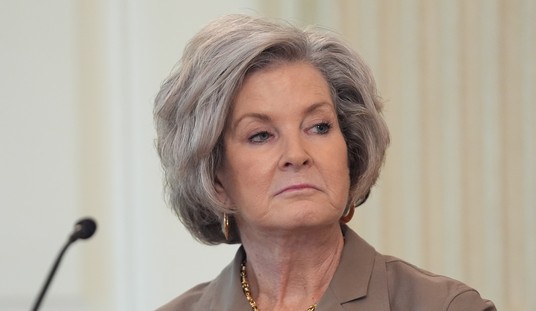=========
=========
Promoted from the diaries by streiff. Promotion does not imply endorsement.
=========
=========
More fall-out from the Ali Watkins revelation continues to rear it’s head.
If you’ll recall, she is the 26 year old reporter who was sleeping with a (now arrested) 57 year old Senate staffer who was feeding her leaks. All these leaks were conveniently designed to prop up the Trump-Russia narrative because that’s essentially the purpose of our media at large these days.
Given the rash of anonymously sourced leaks we’ve endured, many of which turn out to be false, you’d be forgiven if you’ve become suspicious about just how many of their claimed sources actually exist as described.
Before we get to the latest happening, let’s take the media’s exchange with Donald Trump a few weeks ago as an example in which the New York Times claimed a “senior White House official” told them a June 12th summit on North Korea was “impossible” (spoiler alert: the summit is still happening on June 12th). The President responded in kind by claiming no such source existed.
Trump was incorrect when he said that The New York Times “quotes” the official. They actually characterized his remarks. But they definitely claimed a senior White House official said June 12 was impossible.
Media types rushed to The New York Times’ defense, claiming they heard a White House official say the “impossible” line in a background briefing they were privy to. Someone leaked audio of a background briefing that they said supported The New York Times’ “impossible” characterization.
Well, it turned out that the source didn’t exist in so much as a source saying what the New York Times claimed, although a human being was there who said some words. That was enough for the media to indignantly insist Trump was lying by saying the source didn’t exist, even though their “source” didn’t say what they claimed which would logically make him not a source.
Recall that the whole point of their characterization was to say this official was at odds with Trump and that Trump wasn’t listening to his advisors. The fact that Trump and his advisors were not disagreeing with each other undermines the entire point of The New York Times story.
But rather than admit that The New York Times was incorrect, and their reporters aren’t good at listening to Trump advisors or accurately conveying their remarks, the media claimed that Trump was the one lying, since, well, White House advisors who give briefings exist. See, Trump said no source existed who said the June 12 date was impossible — but a source exists who did not say that. Ergo: Trump lied.
In this instance, the media got caught and still couldn’t be bothered to admit what they’d done.
Well, we’ve got more examples to show the pure hackery at play and why you probably shouldn’t trust the media’s word on much of anything.
Here’s Ali Watkins back in September of 2017…
The SSCI read is, Trumpster lawyers will leak info about upcoming appearances, blame the committee, then use as a pretext not to cooperate.
— Ali Watkins (@AliWatkins) September 19, 2017
Senate Intel has been SOOO frustrated in recent weeks by the constant dribble of leaks about who's testifying to them, when.
— Ali Watkins (@AliWatkins) September 19, 2017
Those darn Trumpster lawyers were leaking according to Ms. Watkins. There’s just one problem. We now know that the leaks were actually coming from Mr. Wolfe.
In another case, the indictment said, Mr. Wolfe used an encrypted messaging app to alert another reporter in October 2017 that he had served Mr. Page with a subpoena to testify before the committee. The reporter, who was not named, published an article disclosing that Mr. Page had been compelled to appear. After it was published, Mr. Wolfe wrote to the journalist to say, “Good job!” and, “I’m glad you got the scoop,” according to court papers.
Notice the misdirect here. Despite her knowledge of the real source of all the leaks (she was sleeping with the guy and being fed information), she goes public with claims that it was Trump’s lawyers doing it. Why? Because narrative, that’s why. It allows her to lie about the actual source while blaming Trump in the process.
Another example of this is found in the leak directly tied to Watkins and Wolfe. In it, she leaks (via Wolfe) that Carter Page is “Male 1” in a recorded conversation held as evidence by the Senate Intel Committee. This story would end up catapulting her to the New York Times.
Pay attention to who she claims the source is.
A US intelligence official said that investigators intend to question Page eventually, but that he was not considered a high priority. “There’s so many people that are more relevant,” the official said.
There’s just one problem. The source was actually James Wolfe, who was not a US intelligence official at all. In reality, the source was the Senate staffer she was sleeping with. She misrepresented the source to either hide his identity, puff up his credentials (you aren’t allowed to question Intel agencies), or both.
Small potatoes?
Not really. Given the vehement insistence by the media that they don’t misrepresent sourcing and that they deserve no question on the accuracy of their anonymous claims, it’s a pretty large blow to their credibility.
Whether it’s the New York Times lying about the existence of a source (and the media, et al jumping to defend them) or Ms. Watkins spinning the identity of her sources to push an anti-Trump narrative, the goal is clear and it shows the seedy underbelly of the news media.
These are just a few examples of them getting caught. Imagine how often this happens and we never know about it.














Join the conversation as a VIP Member